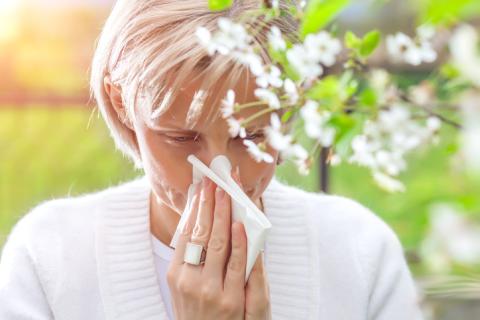I Have a Cold … Or Could It Be Those Cherry Blossoms?
Experts from Vanderbilt University Medical Center offer this advice:
Allergies have a seasonal rhythm to their comings and goings, and we are in the midst of one of the biggest allergy seasons of the year: tree pollen season.
According to Vanderbilt Asthma, Sinus and Allergy Program allergist Dr. Jeffrey Culp, tree pollen season overlaps with cold and flu season. If you are not sure if your sniffles, sneezing and other symptoms are a cold or allergies, here’s one way to tell: If the problem lasts more than about 10 days, it’s most likely an allergy.
All allergy seasons are not created equal, but every time of year has its allergens to be aware of, Culp said.
There are some allergens that remain at a steady level all year, such as pet dander, dust mites and mold.
Tree pollen can start up as early as mid-February, and about the time it subsides in April, grass pollen really becomes heavy. “Easter and Mother’s Day are tough for a lot of people,” Culp said, noting the springtime tree pollen–grass pollen overlap.
Then, as grasses subside in mid-summer, the fall allergens, such as ragweed, begin and last until October.
Fortunately, most people aren’t allergic to everything, and, also fortunately, there are steps that can be taken to deal with the allergens that are encountered, both inside and outside.
Dr. Culp offers four steps to allergy relief
- Do everything possible to stay away from allergens. “This can take different forms,” Culp said. “If you are allergic to dust mites, you need to wash your bedding in hot water once a week, get new pillows, use dust mite covers on your pillows and mattress, vacuum regularly, and use HEPA air filters. If pollen is a problem, you should avoid being outside on high pollen count days, and keep the windows closed. Run your air conditioning in your home and car. I recommend showering and washing your hair after being outside. Hair is a pollen magnet. Pollen counts are highest in the morning and rain helps to lower pollen counts, so keep these factors in mind when planning outdoor activities.”
- Use saline nasal sprays and/or over-the-counter allergy medications.
- If your symptoms are not controlled, consult with an allergist and switch to prescription nasal sprays and medications.
- If these other methods fail, an allergist can recommend allergy shots to give relief.
